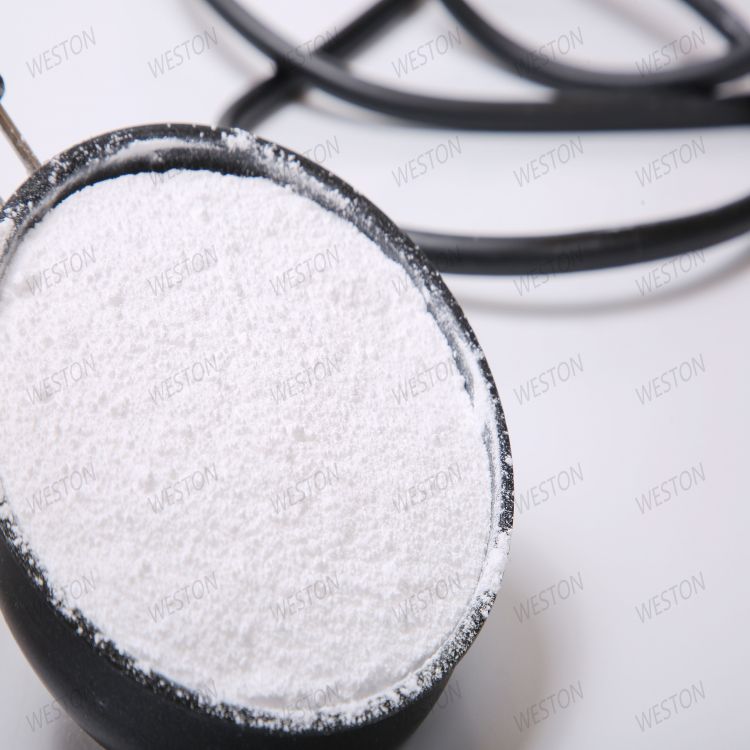-
Categories
-
Pharmaceutical Intermediates
-
Active Pharmaceutical Ingredients
-
Food Additives
- Industrial Coatings
- Agrochemicals
- Dyes and Pigments
- Surfactant
- Flavors and Fragrances
- Chemical Reagents
- Catalyst and Auxiliary
- Natural Products
- Inorganic Chemistry
-
Organic Chemistry
-
Biochemical Engineering
- Analytical Chemistry
- Cosmetic Ingredient
-
Pharmaceutical Intermediates
Promotion
ECHEMI Mall
Wholesale
Weekly Price
Exhibition
News
-
Trade Service
The "Thirteenth Five-Year Plan" energy storage technology is developing rapidly, and it is expected to be popularized and applied
in 2030.
At the recently held "6th China International Energy Storage Conference", the China Chemical and Physical Power Industry Energy Storage Application Branch jointly released the "China Energy Storage Application Industry Research Report (2016)" (hereinafter referred to as the "Report"
).
The "Report" pointed out that it is expected that during the "Thirteenth Five-Year Plan" period, the domestic energy storage market will show a rapid development trend
.
Before 2018, it will be the demonstration and application stage
of advanced energy storage technology.
In 2020, the application of
advanced energy storage technology will be vigorously promoted on the user side.
In 2030, advanced energy storage technology solutions
will be popularized.
From the perspective of market trends, it is expected that by the end of 2020, the cumulative installed capacity of supporting energy storage systems in six major fields, including the domestic auxiliary market, base station backup power supply, wind and solar power generation, distributed generation and microgrid, new energy vehicle charging and swapping stations and home energy storage, will reach 53GW, with a compound annual growth rate of 9.
5%
in the next five years.
From the perspective of supporting energy storage in the six major fields, it is expected that by the end of 2020, the cumulative installed capacity of supporting energy storage systems in six major areas, including the power auxiliary market, base station backup power, wind and solar power generation, distributed generation and microgrid, new energy vehicle charging and swapping stations and home energy storage, will be 25GW, 21GW, 6.
2GW, 364MW, 228MW and 42MW respectively, and the first three areas will occupy 98.
8% of
the market.
From the perspective of technical trends, from the perspective of supporting energy storage battery technology, it is expected that by the end of 2020, the cumulative installed capacity of domestic physical energy storage will be about 31GW, accounting for 58.
8%, and pumped storage will still be the mainstay; The cumulative installed capacity of chemical energy storage is about 22GW, accounting for 41.
2%
of the market.
Specific to the current eight energy storage technology trends:
1.
Pumped storage
Pumped energy storage technology has matured, it is in the stage of large-scale promotion and application, at present, Shandong, Xinjiang, Gansu, Qinghai, Inner Mongolia and other places in China have pumped storage construction plans, is expected to be put into operation
around 2020.
Pumped storage is mainly affected by the geographical environment, and the project site selection demonstration and project construction period are very long, generally about ten years, but the scale of a single project is large, generally at the GW level
.
2、CAES
The main development trends of compressed air energy storage technology include supercritical air energy storage technology, compressed air energy storage technology with heat storage, liquid air energy storage, compressed air energy storage technology combined with gas steam cycle, compressed air energy storage technology coupled with renewable energy, etc
.
Achieve breakthroughs in key technologies of 10MW/100MWh and 100MW/800MWh supercritical compressed air energy storage by 2020, and carry out product demonstration applications, and realize the application and promotion
of technology by 2025.
3.
Flywheel
Before 2020, the domestic flywheel energy storage field will focus on 1MW/1000MJ flywheel energy storage array unit technology, achieve demonstration and promotion before 2025, and strive to achieve market-oriented application and promotion
before 2030.
4、SAMES
Superconducting magnetic energy storage Because the device adopts a superconducting structure, the device loss in the state of energy storage is very small, so the efficiency is higher than that of conventional devices (about 95%)
.
At the same time, the superconducting energy storage system has a fast energy release speed, which can achieve rapid active and reactive power compensation, which has a good application prospect for improving the stability of the power system, suppressing low-frequency fluctuations, and improving the quality of power supply, and can also be applied to solar power generation, wind power generation and other systems with unstable power output to improve its grid-connected performance
.
Before 2020, the field of superconducting magnetic energy storage should focus on high-temperature superconducting energy storage technology and new hybrid energy storage systems based on superconducting magnetism, realize the demonstration and promotion and application of high-temperature superconducting energy storage technology before 2025, strive to realize the experimental model of new hybrid energy storage system based on superconducting magnetism, and strive to achieve the market-oriented promotion and application
of two new key technologies of superconducting magnetic energy storage before 2030.
5.
Supercapacitors
Although supercapacitors have the advantages of high power, fast response speed and long life, the small capacity disadvantages brought about by low specific capacity restrict their independent application prospects in large-scale energy storage and long-term power storage such as power auxiliary services, backup power supply, wind and solar power generation, etc
.
With the breakthrough of large-capacity supercapacitor technology, it has great application prospects
in the field of power auxiliary frequency regulation.
Before 2020, the field of supercapacitors should focus on 10MW-level supercapacitor energy storage technology, as well as new hybrid energy storage systems based on superconducting magnetism, realize the demonstration and promotion and application of high-temperature superconducting energy storage technology before 2025, strive to realize the experimental demonstration of new hybrid energy storage systems based on superconducting magnetism, and strive to achieve the market-oriented application
of two new key technologies of superconducting magnetic energy storage before 2030.
6.
Lithium-ion battery
Lithium-ion batteries are the most promising energy storage batteries
in the future.
Lithium battery has high specific energy, environmental friendliness, and is a battery
with excellent comprehensive performance.
Lithium battery industry in China has a perfect industrial chain, industrialization maturity is high, currently in the base station backup power supply, new energy vehicle charging station, home energy storage, distributed and microgrid field, power auxiliary services in the peak shaving and valley filling and other fields have been applied, the current cost is still a little reduced, and the safety of the product needs to be further improved
.
Before 2020, the field of lithium battery energy storage should focus on 100MW high-safety, low-cost, long-life lithium-ion battery energy storage technology, realize the experimental demonstration of this technology before 2025, and try to promote it to the market, and strive to achieve full market promotion and application
before 2030.
7.
Flow battery
Before 2020, the field of all-vanadium redox flow batteries will focus on the technology of 100MW all-vanadium redox flow battery regional energy storage power station, and promote the test demonstration; Realize the market promotion and application
of this technology by 2025.
Before 2020, the field of sodium-sulfur battery energy storage will focus on large-capacity sodium-sulfur battery energy storage technology above 10MW, realize the experimental demonstration of this technology before 2025, and try to put it on the market, and achieve full market promotion and application
before 2030.
8.
Heat storage and energy storage
There are still some technical problems in domestic distributed solar thermal that need to be solved and breakthroughs
.
First, focus and track technology
.
At present, no matter what kind of distributed photothermal system, the first is the focusing system, or also known as the mirror field, the distributed photothermal system has quite high requirements for focusing, and there are strict requirements for the size of the spot and the accuracy of the focusing point, and the technology in this area needs to be deepened; Secondly, heat transfer and energy storage technology
.
Due to the high temperature of the distributed solar thermal system, the trough type can reach 400 degrees, the dish system can reach 650 degrees, and the tower type can even reach 1000 degrees, so the requirements for heat transfer and energy storage media are particularly high, and breakthroughs are needed in this technology, such as high-parameter molten salt; Finally, critical power generation equipment
.
In particular, it refers to the Stirling power generation system of the disc system, the application of the disc system as a distributed system has broad prospects, because of its small size, very little water consumption, and can directly output AC current, but the overall technology of the Stirling engine has not yet been mastered, and it is necessary to break through its core components and related technologies
.
Before 2020, actively promote the trial and demonstration of large-capacity heat storage/cold storage systems in distributed energy systems, and strive to achieve comprehensive market-oriented applications before 2025; In the field of high-temperature heat storage, we will focus on new high-temperature heat storage technologies before 2020 and large-capacity thermochemical heat storage technologies
before 2025.
The "Thirteenth Five-Year Plan" energy storage technology is developing rapidly, and it is expected to be popularized and applied
in 2030.
At the recently held "6th China International Energy Storage Conference", the China Chemical and Physical Power Industry Energy Storage Application Branch jointly released the "China Energy Storage Application Industry Research Report (2016)" (hereinafter referred to as the "Report"
).
The "Report" pointed out that it is expected that during the "Thirteenth Five-Year Plan" period, the domestic energy storage market will show a rapid development trend
.
Before 2018, it will be the demonstration and application stage
of advanced energy storage technology.
In 2020, the application of
advanced energy storage technology will be vigorously promoted on the user side.
In 2030, advanced energy storage technology solutions
will be popularized.
From the perspective of market trends, it is expected that by the end of 2020, the cumulative installed capacity of supporting energy storage systems in six major fields, including the domestic auxiliary market, base station backup power supply, wind and solar power generation, distributed generation and microgrid, new energy vehicle charging and swapping stations and home energy storage, will reach 53GW, with a compound annual growth rate of 9.
5%
in the next five years.
From the perspective of supporting energy storage in the six major fields, it is expected that by the end of 2020, the cumulative installed capacity of supporting energy storage systems in six major areas, including the power auxiliary market, base station backup power, wind and solar power generation, distributed generation and microgrid, new energy vehicle charging and swapping stations and home energy storage, will be 25GW, 21GW, 6.
2GW, 364MW, 228MW and 42MW respectively, and the first three areas will occupy 98.
8% of
the market.
From the perspective of technical trends, from the perspective of supporting energy storage battery technology, it is expected that by the end of 2020, the cumulative installed capacity of domestic physical energy storage will be about 31GW, accounting for 58.
8%, and pumped storage will still be the mainstay; The cumulative installed capacity of chemical energy storage is about 22GW, accounting for 41.
2%
of the market.
Specific to the current eight energy storage technology trends:
1.
Pumped storage
Pumped energy storage technology has matured, it is in the stage of large-scale promotion and application, at present, Shandong, Xinjiang, Gansu, Qinghai, Inner Mongolia and other places in China have pumped storage construction plans, is expected to be put into operation
around 2020.
Pumped storage is mainly affected by the geographical environment, and the project site selection demonstration and project construction period are very long, generally about ten years, but the scale of a single project is large, generally at the GW level
.
2、CAES
The main development trends of compressed air energy storage technology include supercritical air energy storage technology, compressed air energy storage technology with heat storage, liquid air energy storage, compressed air energy storage technology combined with gas steam cycle, compressed air energy storage technology coupled with renewable energy, etc
.
Achieve breakthroughs in key technologies of 10MW/100MWh and 100MW/800MWh supercritical compressed air energy storage by 2020, and carry out product demonstration applications, and realize the application and promotion
of technology by 2025.
3.
Flywheel
Before 2020, the domestic flywheel energy storage field will focus on 1MW/1000MJ flywheel energy storage array unit technology, achieve demonstration and promotion before 2025, and strive to achieve market-oriented application and promotion
before 2030.
4、SAMES
Superconducting magnetic energy storage Because the device adopts a superconducting structure, the device loss in the state of energy storage is very small, so the efficiency is higher than that of conventional devices (about 95%)
.
At the same time, the superconducting energy storage system has a fast energy release speed, which can achieve rapid active and reactive power compensation, which has a good application prospect for improving the stability of the power system, suppressing low-frequency fluctuations, and improving the quality of power supply, and can also be applied to solar power generation, wind power generation and other systems with unstable power output to improve its grid-connected performance
.
Before 2020, the field of superconducting magnetic energy storage should focus on high-temperature superconducting energy storage technology and new hybrid energy storage systems based on superconducting magnetism, realize the demonstration and promotion and application of high-temperature superconducting energy storage technology before 2025, strive to realize the experimental model of new hybrid energy storage system based on superconducting magnetism, and strive to achieve the market-oriented promotion and application
of two new key technologies of superconducting magnetic energy storage before 2030.
5.
Supercapacitors
Although supercapacitors have the advantages of high power, fast response speed and long life, the small capacity disadvantages brought about by low specific capacity restrict their independent application prospects in large-scale energy storage and long-term power storage such as power auxiliary services, backup power supply, wind and solar power generation, etc
.
With the breakthrough of large-capacity supercapacitor technology, it has great application prospects
in the field of power auxiliary frequency regulation.
Before 2020, the field of supercapacitors should focus on 10MW-level supercapacitor energy storage technology, as well as new hybrid energy storage systems based on superconducting magnetism, realize the demonstration and promotion and application of high-temperature superconducting energy storage technology before 2025, strive to realize the experimental demonstration of new hybrid energy storage systems based on superconducting magnetism, and strive to achieve the market-oriented application
of two new key technologies of superconducting magnetic energy storage before 2030.
6.
Lithium-ion battery
Lithium-ion batteries are the most promising energy storage batteries
in the future.
Lithium battery has high specific energy, environmental friendliness, and is a battery
with excellent comprehensive performance.
Lithium battery industry in China has a perfect industrial chain, industrialization maturity is high, currently in the base station backup power supply, new energy vehicle charging station, home energy storage, distributed and microgrid field, power auxiliary services in the peak shaving and valley filling and other fields have been applied, the current cost is still a little reduced, and the safety of the product needs to be further improved
.
Before 2020, the field of lithium battery energy storage should focus on 100MW high-safety, low-cost, long-life lithium-ion battery energy storage technology, realize the experimental demonstration of this technology before 2025, and try to promote it to the market, and strive to achieve full market promotion and application
before 2030.
7.
Flow battery
Before 2020, the field of all-vanadium redox flow batteries will focus on the technology of 100MW all-vanadium redox flow battery regional energy storage power station, and promote the test demonstration; Realize the market promotion and application
of this technology by 2025.
Before 2020, the field of sodium-sulfur battery energy storage will focus on large-capacity sodium-sulfur battery energy storage technology above 10MW, realize the experimental demonstration of this technology before 2025, and try to put it on the market, and achieve full market promotion and application
before 2030.
8.
Heat storage and energy storage
There are still some technical problems in domestic distributed solar thermal that need to be solved and breakthroughs
.
First, focus and track technology
.
At present, no matter what kind of distributed photothermal system, the first is the focusing system, or also known as the mirror field, the distributed photothermal system has quite high requirements for focusing, and there are strict requirements for the size of the spot and the accuracy of the focusing point, and the technology in this area needs to be deepened; Secondly, heat transfer and energy storage technology
.
Due to the high temperature of the distributed solar thermal system, the trough type can reach 400 degrees, the dish system can reach 650 degrees, and the tower type can even reach 1000 degrees, so the requirements for heat transfer and energy storage media are particularly high, and breakthroughs are needed in this technology, such as high-parameter molten salt; Finally, critical power generation equipment
.
In particular, it refers to the Stirling power generation system of the disc system, the application of the disc system as a distributed system has broad prospects, because of its small size, very little water consumption, and can directly output AC current, but the overall technology of the Stirling engine has not yet been mastered, and it is necessary to break through its core components and related technologies
.
Before 2020, actively promote the trial and demonstration of large-capacity heat storage/cold storage systems in distributed energy systems, and strive to achieve comprehensive market-oriented applications before 2025; In the field of high-temperature heat storage, we will focus on new high-temperature heat storage technologies before 2020 and large-capacity thermochemical heat storage technologies
before 2025.







